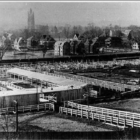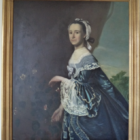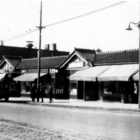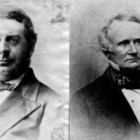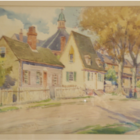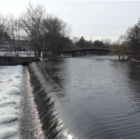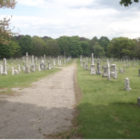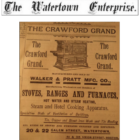Around Town
Our History: The War Horses of Watertown
|
Union Market Stockyards on Arsenal Street with the Perkins tower in background (Courtesy of the Watertown Free Public Library)
The following story is part of a series on local history provided by the Historical Society of Watertown. It was written by Historical Society of Watertown board member Mary Spiers. Mary served as our Recording and Corresponding Secretary for several years. (Mary retired from the Board in January 2923 but is still a volunteer. She wrote this article for our January 2013 newsletter, “The Town Crier.”) Information concerning what appears to have been a significant political clash over using the stockyards for the export of war horses was gathered from the archives of the 1915-1916 Boston Globe and the Watertown Tribune-Enterprise.
